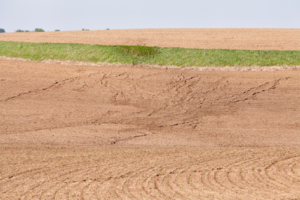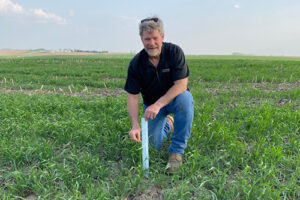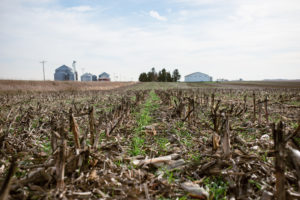By: 4R Plus
July 2018
Mitchell County, Iowa, farmer Wayne Fredericks believes you have to practice what you preach “or you shouldn’t be out there preaching.” He believes cover crops can make a dramatic difference in keeping nutrients and soil on farms and out of the waterways. He’s gradually added acres to cover crops and this fall he plans on seeing green on all of his acres.
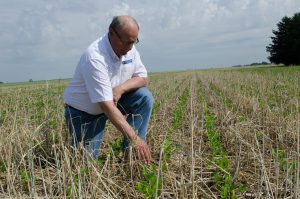
Fredericks is glad to tell his story because he’s learned a lot along the way. He was one of the first in his county to plant cover crops. His neighbors were curious and eager to learn more and he acknowledges it’s a drastic departure from farming systems of the past.
“We have to adopt a tillage system that improves the success of cover crops. In southern Iowa and the more rolling country, where they are already in a no-till system, they are in a perfect position to quickly implement cover crops,” he said. “Here in north-central Iowa, we have to find a different way to incorporate cover crops because of our soil types. We have been advocating strip-till, no-till or a strip-till and no-till combination system.”
He immediately saw the benefits from a new tillage system. “We saw enough economic benefits from a labor and machinery standpoint that I felt there was enough margin to buy the cover crop seed,” he said, noting the added benefits of improved weed control.
- Fredericks encourages farmers to start planning for planting cover crops right now. Stop into the National Resources Conservation Services (NRCS) office to find out what programs are available from a cost-share standpoint. Programs can vary by watershed.
- While you are there, inquire about custom services in your area. Find out who can help you with applying cover crop seed.
- Then work with your crop adviser to make a plan.
Bryce Nelson of Advantage Crop Consulting Inc. works with Fredericks to determine that plan. Fredericks says he appreciates the time Nelson spends analyzing the data, as it helps him prioritize fields. The two agree that one of the benefits of having a crop consultant is they see what’s working in the area and can transfer information among farmers. “To be successful in adopting a new practice, you have to be willing to learn something new and have the patience to make it work,” said Nelson.
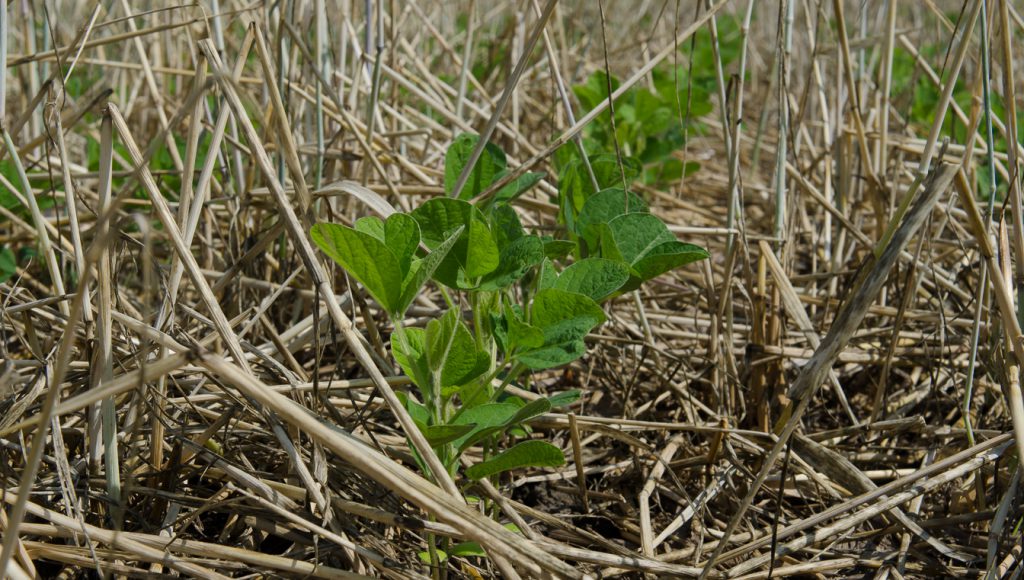
Fredericks encourages farmers to pick one field. “If you have a field with erosion problems, that’s a good place to start, as you will immediately see the benefits from keeping soil where it belongs,” he said.
Over time, Fredericks has noticed the improvements to water infiltration and soil quality. “I found roots 40-plus-inches deep from cereal rye. So we know the roots can go deep and replace the tillage tool,” he said. “And of course I know I’m adding organic matter to my soil and improving the value of the land.”
Costs can be a hurdle for some considering cover crops, but Fredericks quickly overcame that obstacle. “Society expects us to do a better job of taking care of the land and our water,” he said. “I believe farmers need to contribute to the solution, but I also believe that society can contribute. That’s why I encourage farmers to look into cost-share options.”
“If we change the landscape of agriculture and heavily incorporate cover crops, our water concerns will dramatically diminish,” said Fredericks.
“Wayne has made up his mind that he’s going to make cover crops work on his farm, and when you do that, you find a way to make it happen. That’s the kind of mindset needed to make a new practice effective in the long run,” said Nelson.

